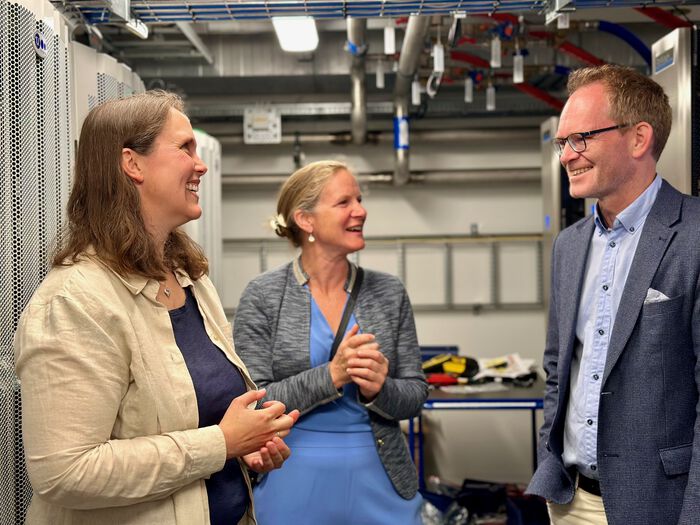Solid state technology can make batteries both safer and miniscule.
A cell phone that catches fire on a plane; a burning Tesla by the roadside; an exploding electric ferry – stories of spontaneously combusting batteries appear regularly in our news feeds. Although most batteries are safe, and electric cars have significantly less chance of catching fire than a gasoline car, the stored energy can undoubtedly cause damage if it comes astray.
You may also read this article in Norwegian
Increasingly, we surround ourselves with technology that need mobile power: phones, laptops, cars and medical devices to mention some. In time, many will install house batteries in order to download power at times when it is cheaper and store it until it is needed; especially relevant for houses with solar cell installations, which are becoming ever more proliferate.
Safer without liquids
One of the ways we try to limit the risk of overheating and gas generation is by trying to find solids that can replace the liquids and gels that are usually used as electrolytes in batteries.
A little background: A battery is a chemical storage for electrical energy. Essentially it consists of two poles of different materials and an electrolyte between the poles. The poles create a voltage, which the battery tries to neutralise by sending a current of both electrons and ions (atoms with electric charge) between the poles, enabled by chemical reactions.
The task of the electrolyte is to let the ions pass between the poles but block the electrons, so that they have to travel outside the battery in an external circuit - and this external circuit can be part of a torchlight, mobile phone, electric car or other things that need power. When Hyundai calls its electric car Ioniq, they are referring to the ionic current inside the battery.
Things may go wrong
A battery electrolyte is usually a liquid or gel, and can develop gases or leak out of the battery if something goes wrong. Particles or small spikes on or between the poles inside the battery may cause a short circuit, leading to overheating and fire. Too fast charging or discharging may also cause overheating, gas development and fire; damage or high external temperature may as well. But if we manage to make electrolytes out of solid materials, we could eliminate the risk of short circuits, gas generation and leakage, and thus the danger of the battery spontaneously catching fire or exploding.
The problem is that solids are notoriously bad ionic conductors; the fluid ones are often a thousand times better. Squeezing through a fixed grating of atoms is usually a lot more difficult than floating through a liquid. Therefore, intense research is under way to find affordable solid electrolytes that conduct ions reasonably well.
Inconsequential resistance
One way to circumvent the bad conductivity is to make the electrolyte so thin that its electrical resistance becomes inconsequential. This is another advantage of solid electrolytes: they can be made more compact than a liquid electrolyte. The liquid electrolyte requires a porous material called a separator to seep through between the poles so that they don’t come into contact with each other.
Solid electrolytes double up as separators, and can be made very thin, which means that the battery can potentially be made very small. This is handy for medical implants such as pacemakers, timed release capsules, neural stimulation and other devices that need power. So in solving the problem of lousy ionic conduction with miniscule solid electrolytes we may also provide the boon of enabling miniaturisation.
We’re not there yet. Solid state batteries haven’t taken over the battery industry. But Toyota has pledged to make electric vehicles with solid state batteries in 2020, and plenty other research is being done. So in a few years, if you’re buying a new car, phone or laptop, its battery may well be a fireproof solid state battery.
More science news from the University of Oslo





